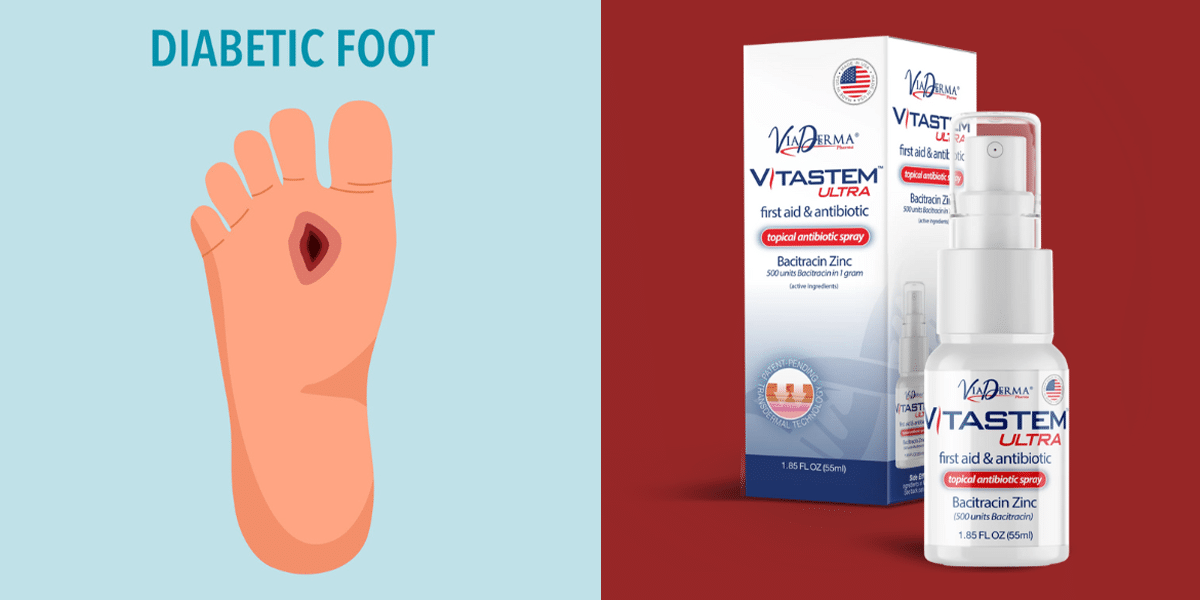By: Thomas Klein
In the ever-growing narrative of healthcare challenges, there are approximately 2 million Americans that find themselves grappling with the onset of diabetic foot ulcers every year. Tragically, within a mere five years of ulceration, a disquieting statistic reveals that over 50% of individuals meet an untimely demise, while 5% face the profound and life-altering reality of limb loss.
The economic ramifications of diabetic foot ulcers cast a formidable shadow, with an annual burden of $130 billion on the U.S. healthcare system. Managing these ulcers demands a significant commitment to patient self-care, encompassing daily wound care rituals and stringent ambulation restrictions. The stakes are high, as the consequences can be devastating, especially if a major amputation—either above or below the knee—becomes an unavoidable necessity.
The fear instilled by the prospect of a major amputation from diabetic foot ulcers is profound, often surpassing the fear of mortality itself. This unique perspective sheds light on the intricate web of emotions and challenges faced by individuals navigating the complex terrain of diabetic foot ulcers, emphasizing the need for comprehensive and compassionate healthcare approaches.
US Diabetic Ulcer Statistics
In the realm of health awareness, November is acknowledged as Diabetes Awareness Month, aiming to draw attention to the burgeoning and potentially life-threatening epidemic. According to this analysis, the current count reveals that over 37 million Americans grapple with diabetes, a figure projected to escalate to 54.9 million by 2030. While factors such as increasing obesity rates and an aging population have traditionally contributed to this rise, recent research underscores a concerning trend: a surge in diabetes diagnoses among younger individuals.
Between 2001 and 2017, the number of people under the age of 20 diagnosed with diabetes surged by 45%, with a staggering 95% increase in the number living with type 2 diabetes. This shift in demographics poses an additional challenge to the healthcare system in the years to come.
As the number of newly diagnosed diabetics grows, so does the incidence of complications, notably diabetic foot ulcers and related amputations. The COVID-19 pandemic has played a role in this escalation, affecting young people with diabetes through factors such as sudden and prolonged social isolation, sedentary lifestyles, treatment delays, and inconsistent disease management. Last year witnessed a 29% increase in diabetes-related deaths for younger individuals.
Diabetic foot ulcers (DFUs), open sores on the lower limb that become infected, are now a common cause of hospitalization among diabetics. These ulcers, often developing on weight-bearing areas of the foot, can lead to lower limb amputations in one in five patients diagnosed. A distressing statistic notes that every 20 seconds, a diabetes-related amputation is performed, with a five-year mortality rate exceeding 74% for patients with lower extremity amputation—higher than the combined rates for certain cancers like prostate, breast, and colon.
Uncontrolled blood sugar levels compound the issue by depriving blood vessels of essential oxygen and nutrients crucial for healing. Diabetic neuropathy, causing a loss of sensation in the lower limbs, further complicates matters, as individuals may be unaware of existing wounds. Peripheral artery disease, prevalent in many with diabetes, exacerbates the severity of wounds due to compromised blood flow.
A seemingly minor cut or scrape can rapidly become a severe, life-threatening infection. Recognition of a diabetic ulcer or wound warrants immediate consultation with a physician for evaluation and potential referral to a wound care specialist. While the general rule advises seeking medical attention if a wound hasn’t healed within 30 days, individuals with diabetes should prioritize early intervention. Proper treatment significantly reduces the risk of complications.
For those navigating diabetes, vigilant foot care becomes imperative:
- Regularly check feet, including the bottoms, and promptly consult a physician upon discovering a wound.
- Adhere to treatment schedules and instructions if already undergoing chronic wound treatment.
- Consume a nutritious diet rich in protein, fruits, vegetables, healthy fats, and whole grains to foster healing.
- Limit alcohol intake and refrain from smoking, recognizing that smoking hampers circulation and impedes the healing process.
Vitastem: A New & Innovative Treatment for Diabetic Ulcers
Introducing Vitastem Ultra, an FDA-registered and patent-pending topical antibiotic spray composed of natural ingredients coupled with a proprietary transdermal drug delivery method developed by parent company ViaDerma (OTC: VDRM). In the domain of medical breakthroughs, Vitastem Ultra emerges as a powerhouse with distinctive characteristics:
Vitastem Ultra is celebrated for its unparalleled efficacy in eliminating all gram-positive and gram-negative bacteria it’s been tested against, a roster that includes MRSA (flesh-eating bacteria) and Staph Infection.
Standing as a singular entity in the pharmaceutical landscape, Vitastem Ultra is distinguished as the world’s only antibiotic employing both physical and chemical kill mechanisms, endowing it with a unique prowess to conquer drug-resistant bacteria.
Vitastem provides an exceptional ability to facilitate tissue healing and regeneration, setting it apart from any other medication currently available.
Noteworthy statistics underscore Vitastem Ultra’s impact on diabetic wounds and ulcers, with an impressive 96% of patients witnessing improvement within a mere two weeks. This starkly contrasts with the performance of the largest name brand Rx competitor, which records a 50% improvement rate at the 20-week mark.
Providing amazing life-saving potential, Vitastem Ultra has been instrumental in preventing countless patients from undergoing amputations, leading to reduced hospital stays and increased life expectancy.
The uniqueness of Vitastem Ultra extends to its nature as a topical antibiotic, sparing internal organs from the adverse effects associated with oral antibiotics. Its specialized combination of ingredients, presented in a patent-pending delivery formula, enables the transportation of medicine at an extraordinary 10 times the strength and depth compared to other market offerings.
Vitastem Ultra’s innovative transdermal drug delivery formula prompts the cell wall to become up to 10 times more permeable than normal, facilitating the entry of substantially more medicine. This rapid and overwhelming action against bacteria minimizes the time available for adaptation and resistance development.
The highly concentrated and swift delivery of medicine is a hallmark of Vitastem Ultra, translating into remarkable patient results within just 24 hours— a noteworthy departure from the 5 to 7 days typically associated with other products treating similar conditions.
The unique composition of Vitastem showcases its distinctiveness by incorporating both vitamin D3 and vitamin C (ascorbic acid). This infusion of essential vitamins into damaged skin cells contributes to the repair and rejuvenation of the skin, marking Vitastem as an innovative force in antibiotic therapy.
For those struggling with non-healing diabetic ulcers, there is hope and a simple solution. Just make sure to ask your doctor about Vitastem Ultra to determine if this innovative wound treatment can be good for your unique needs.

















